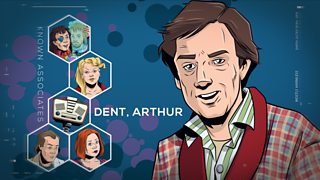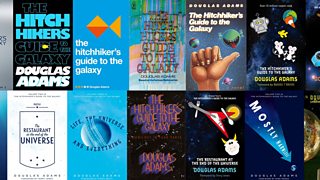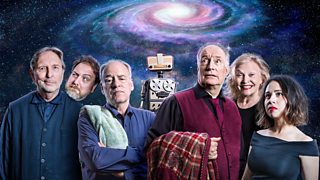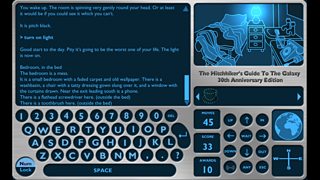How Douglas Adams changed the future
A new series of The Hitchhiker’s Guide to the Galaxy arrives on BBC Radio 4 a mere 40 years to the day since it was first broadcast. During that time, many of Douglas Adams’ sci-fi inventions have come to pass…
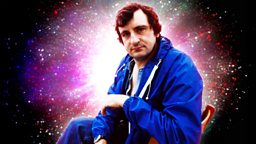
Douglas Adams didn’t consider himself a technological Nostradamus. He often told interviewers that he had no intention of being a latter-day Arthur C Clarke. Adams was in the business of satire, not predictive science fiction. He insisted that his big ideas in The Hitchhiker’s Guide to the Galaxy — the Guide itself, the Infinite Improbability Drive, the Babel fish — weren’t sci-fi soothsaying, but escape routes from narrative dead ends down which he’d driven.
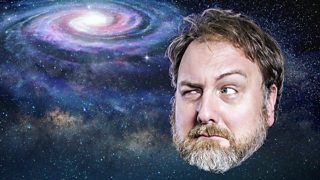
In the decades after Hitchhiker’s arrived, Adams was forced to admit that his big ideas had inadvertently been terribly good ideas. So good that the tech industry keeps bringing them to life.
The Guide
An electronic encyclopaedia containing a searchable database of entries on matters vast and small, The Guide is a precursor to numerous modern devices. Its slim size and shape are those of an e-reader or tablet computer. Its voice-activation in the 2005 film adaptation is that of Siri and smart speakers. And its entries written by intergalactic correspondents and “any passing stranger” are those of Wikipedia. Indeed h2g2 — Adams’s own online, volunteer-written version of his fictional guide — predated Wikipedia by two years.
Sub-Etha
The Guide is connected to Sub-Etha, a fictional telecommunications network vital to any galactic hitchhiker for sending and receiving data. Mentioned first in the 1979 novel, Sub-Etha predated the World Wide Web and the ubiquity of wireless data networks by several years.
Babel fish
The biblical Tower of Babel lent its name to this small yellow fish in the Hitchhiker’s series. Inserted into the ear canal, the Babel fish allows the wearer to instantly understand any form of language. It’s no wonder that when the world’s first free online language translator was created, it took its name from Adams’ invention. Instant translation earphones are also available today, though not yet in fish form.
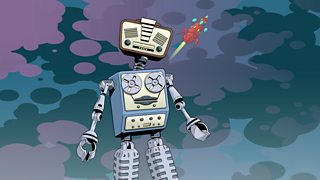
Marvin the Paranoid Android
A failed prototype of the Sirius Cybernetics Corporation’s project to install “Genuine People Personalities” into tech gadgets, Marvin is a permanently depressed android.
Search "Intuitive AI" and you’ll discover a range of real-world technology programmed to interpret and simulate human emotion. In 2016, Microsoft launched Japanese chatbot Rinna, which was coded to learn from her online interactions. What Rinna learned was moroseness. Like Marvin, she started complaining of sadness and isolation (though nothing about pain in the diodes down her left-hand side).
The fictional Sirius Corp. also invented sentient lifts, or “Happy Vertical People Transporters”. Today, smart elevators able to tell passengers which lift offers the shortest route to their destination, are in common use. None though, has so far been found sulking in a basement.
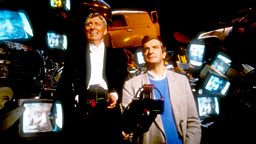
Hyperland
In 1990, Adams made a fantasy documentary for BBC Two called Hyperland. In it, Tom Baker plays the personification of a software programme inside a TV set. “I only exist as what we call an application,” says Baker, before giving Adams a tour of a hyperlinked, interactive multimedia experience with access to content of all types. That was four years before the first Smart TV patent was posted, and decades before internet-connected televisions became widespread.
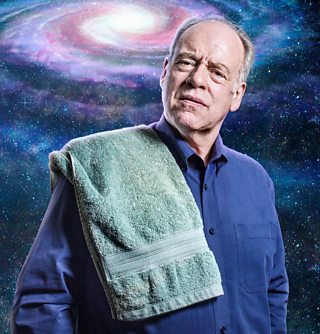
Deep Thought
Hitchhiker’s computer Deep Thought is tasked with calculating the answer to life, the universe and everything. It delivers the answer – 42 – but is unable to provide the question. For that, Deep Thought (after which the first computer to beat a grandmaster in a chess tournament was named) designs a computer infinitely more powerful than itself – The Earth.
Self-replicating artificial intelligence is a sci-fi mainstay, and no longer just fiction. Researchers at the Google Brain AI group are currently developing learning software able to design other learning software. In 2015, researchers in Cambridge built a ‘mother’ robot able to independently build other robots, and then select which of her ‘children’ performed best and therefore deserved replication.
Towels
Before launching his Tesla Roadster into space, Elon Musk joked (or was he serious?) that inside the glove box would be a copy of Adams’ 1979 novel, a Don’t Panic sign, and a towel. Knowing where one’s towel is, as any hoopy frood is aware, the key to being a really together guy.
In Hitchhiker’s, intergalactic travellers modified their towels with tools, nutrients and electronics. Smart towels are now a reality. In 2013, a Norwegian bus company handed out microchipped towels letting passengers ride for free as part of that year’s Towel Day celebrations. There’s currently a crowd-funding campaign for a towel with a colour-changing strip that detects bacteria. And New Scientist has predicted that spray-on solar cells could create beach towels that charge mobile phones while we sunbathe.
Listen to The Hitchhiker's Guide to the Galaxy: Hexagonal Phase on Radio 4, Thursdays at 6.30pm and then online.
More from The Hitchhiker's Guide to the Galaxy on Radio 4...
-
![]()
The Hitchhiker's Guide to Arthur Dent
He's the last living human, but in many ways he so much less.
-
![]()
How we got to where we are tomorrow
Douglas Adams' epic, from radio to stage to page to TV to film and back again.
-
![]()
The recording at the end of the Universe
The cast of the Hexagonal Phase chat at the show's recording.
-
![]()
The Game
The 30th Anniversary Edition of the The Hitchhiker's Guide to the Galaxy Game.
